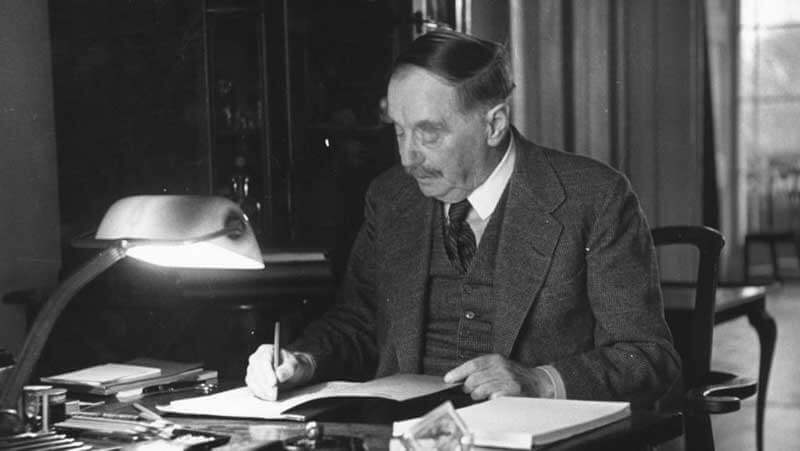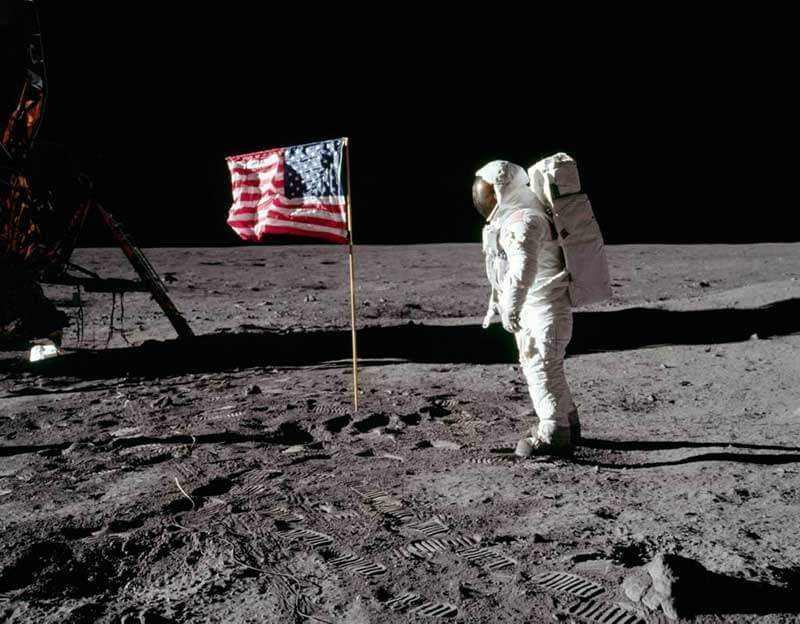- From a young, fanatical reader to science fiction icon
- The Island of Dr Moreau: setting the basis for modern genetic engineering
- Wells’ terrible prediction: the atomic bomb
- The First Men in the Moon beats Armstrong
- Wireless communication: once a sci-fi storyline, today a reality
- Fictional ideas: what’s in it for today’s scientists?
“I wander around the world as a common man and, as a common man, observe what is going on around me,” H.G. Wells once said. And he certainly observed a lot, digesting what he saw and offering startlingly accurate predictions of the future.
From a young, fanatical reader to science fiction icon
Herbert George Wells, often referred to as the founder of science fiction, was born in 1866 in London, and was an avid reader from an early age. At seven, he was already exploring works by Charles Dickens and Washington Irving. And after getting a scholarship at The Normal School of Science, Wells spent most of his time studying astronomy, biology, and chemistry, while still following his passion to read and write. After publishing his first novel, The Time Machine, Wells became an overnight success. The book dealt with both social and scientific topics, such as questions of meaning and humanity’s penchant for self-destruction – a trend that continued throughout his works. Following this success, he wrote The Island of Doctor Moreau, The Invisible Man, and The War of the Worlds. The list, of course, goes on and on. At one point in his life, Wells was writing three novels a year, resulting in a huge volume of work that eventually totalled more than 100 books. Although Wells’ work left a deep mark on the society and time in which he lived, what distinguished him from other writers who might have shared similar visions, was his ability to predict the future, to see past the limitations of his era and imagine how technology would – and wouldn’t – change our lives.

The Island of Dr Moreau: setting the basis for modern genetic engineering
In his book, The Island of Dr Moreau, which was published in 1896, Wells introduces a mad doctor who conducts experiments on different animals, turning them into human hybrids. The idea that scientists were sometimes playing God later became a common theme, but Wells was among the first to explore it, following on the heels of Mary Shelley’s Frankenstein. Although today’s scientists aren’t creating new animal species by assembling body parts, they’re working on growing compatible organs for human transplant through genetic engineering – far closer to Wells’ nightmare than Shelley’s. And despite ethical concerns, scientists have taken far more than the first step in this direction. As the Guardian reports, researchers managed to insert human cells into a pig embryo, a major breakthrough set to revolutionise the process of growing functional organs and tissues.
Wells’ terrible prediction: the atomic bomb
Almost 30 years before the Manhattan Project produced the world’s first nuclear weapon, H.G. Wells envisioned one of the most defining inventions of the 20th century. In his novel The World Set Free, Wells described a grenade that explodes indefinitely, a weapon of mass destruction that shares a terrible resemblance to future developments. His vision was so accurate that it even included a gigantic mushroom cloud and long-term radiation.
The First Men in the Moon beats Armstrong
But Wells didn’t predict only catastrophes such as the atomic bomb. The First Men in the Moon, a scientific romance published in 1901, 68 years before Apollo 11 landed on the Moon, tells a story about two protagonists, a businessman and a scientist, who decide to take a trip to the Moon where they encounter numerous creatures referred to as “Selenites”. During their travel, they experience the weightlessness of space, and when they land on the Moon, they’re amazed by its low gravity. And although Neil Armstrong, the first person to set foot on the Moon, didn’t encounter strange creatures or fast-growing jungles, many of the details of this expedition were clearly envisioned years before it actually happened.

Wireless communication: once a sci-fi storyline, today a reality
Although H.G. Wells couldn’t even imagine how dependent we would be on his next prediction, he certainly did a good job in introducing it to us. The mobile phone, which has become a necessity for modern life, is mentioned in novels such as The Shape of Things to Come, and Men like Gods (1923), where the protagonists communicate wirelessly through devices similar to today’s mobiles. In Men like Gods, he also describes something like email and voicemail where “a message is sent to the station of the district in which the recipient is known to be, and there it waits until he chooses to tap his accumulated messages. And any that one wishes to repeat can be repeated. Then he talks back to the senders and dispatches any other messages he wishes”. That’s an amazing vision of things to come!
Fictional ideas: what’s in it for today’s scientists?
H.G Wells also made other predictions about future technologies, such as a death ray and a time machine, neither of which have been invented – yet. But it’s worth considering that many of Wells’ predictions – a very long list – have come to pass. His written work didn’t just open doors to a completely new world for his readers, it also inspired many others to make his visions a reality. Wells, a great storyteller who imagined the unimaginable, is still pushing scientists to inch a little closer to his creative imagination. So, who knows, maybe in the years ahead we’ll be talking about time travel or invisibility drugs, the same way we’re talking about our phones or gene editing now.
Share via:


